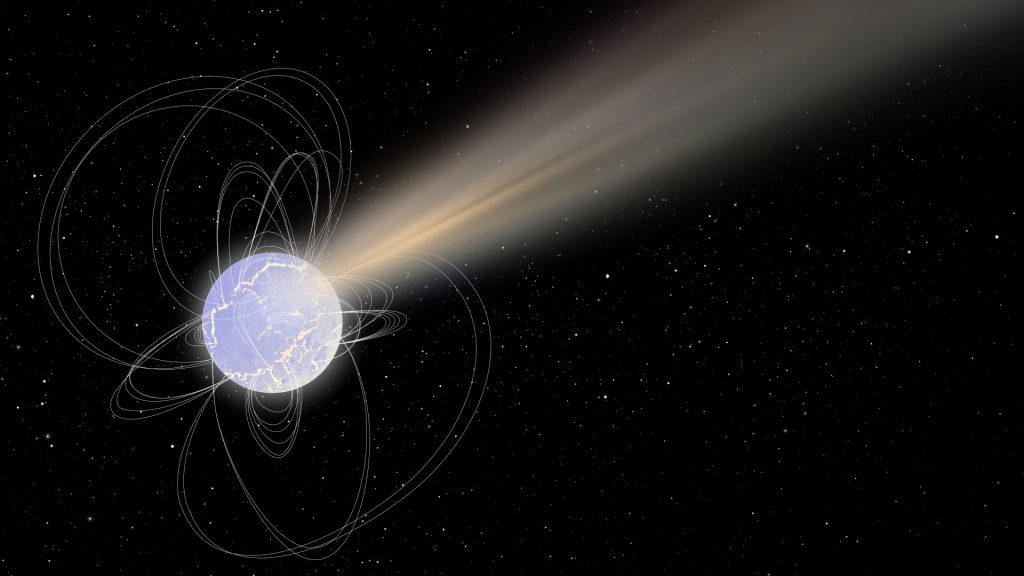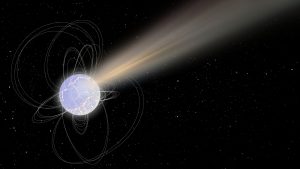Link between magnetars and Fast radio bursts
An international campaign including ground-based and space telescopes, including the INTEGRAL satellite, discovered end of April 2020 very short pulses in both X-rays and radio waves coming from a compact object in the Galaxy, the magnetar SGR 1935+2154. The simultaneous observation of these signals is seen for the first time in this type of source and attests a connection between magnetars and Fast radio bursts, a class of radio sources whose origin is today poorly known. This work, that includes researchers from the Astrophysics Department/ AIM Laboratory of CEA-Irfu of Paris-Saclay, is published in The Astrophysical Journal Letters and subject press release of a European Space Agency (ESA).

Key role of the INTEGRAL satellite
The INTEGRAL satellite played a major role in this study by detecting, thanks to its automatic detection system, a signal in the field of view of the instruments while they were pointing to the main target of the observing programme, namely the microquasar GRS 1915+105. This analysis package, called IBAS for INTEGRAL Burst Alert System, allows to detect and locate unexpected events in the large field of view of the instrument, 30×30 degrees for the IBIS telescope. The prompt alert allowed immediate joint and complementary analysis. Independently, intense radio pulses were picked up on the same day by the Chime and Stare2 radio networks (the first located in Canada, the second in the USA). These signals were then quickly associated with the source detected by INTEGRAL, the magnetar SGR 1935+2154.

Contacts CEA: Diego Götz, Jérôme Rodriguez
Publication :
« INTEGRAL discovery of a burst with associated radio emission from the magnetar SGR 1935+2154 », S. Mereghetti et al, published in the review The Astrophysical Journal Letters, july 2020
Access to the paper : https://arxiv.org/abs/2005.06335
See aloso :
The press release from ESA


